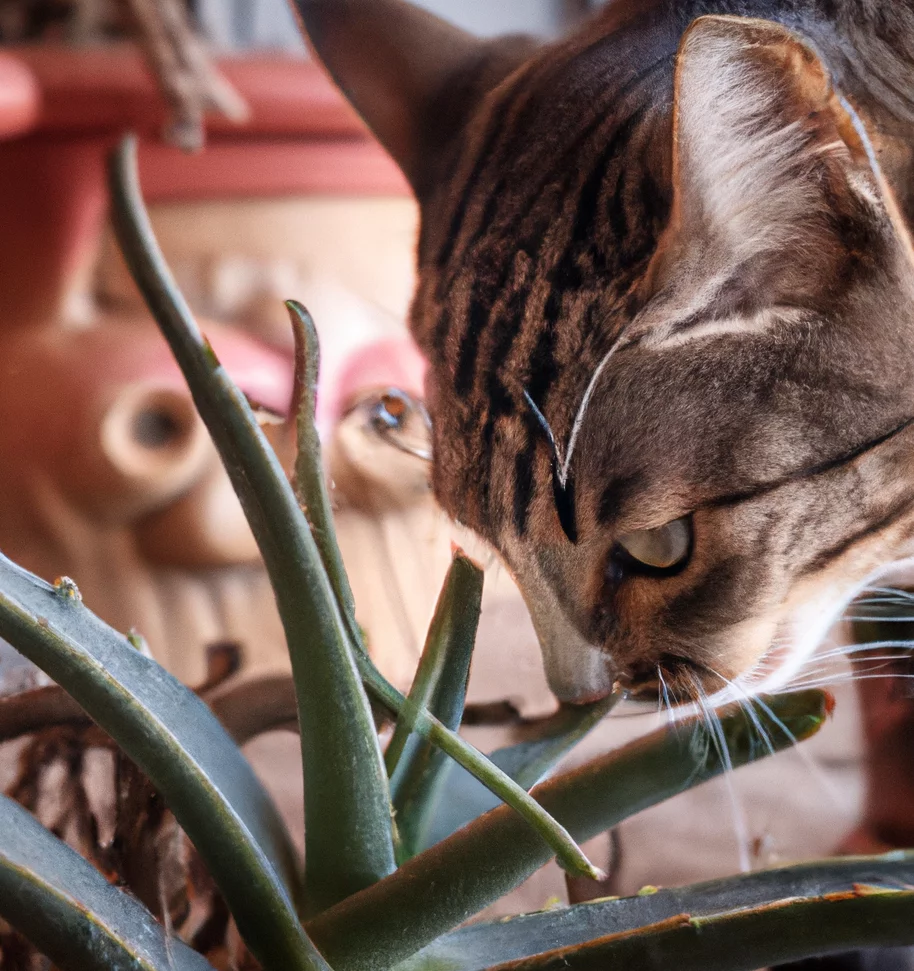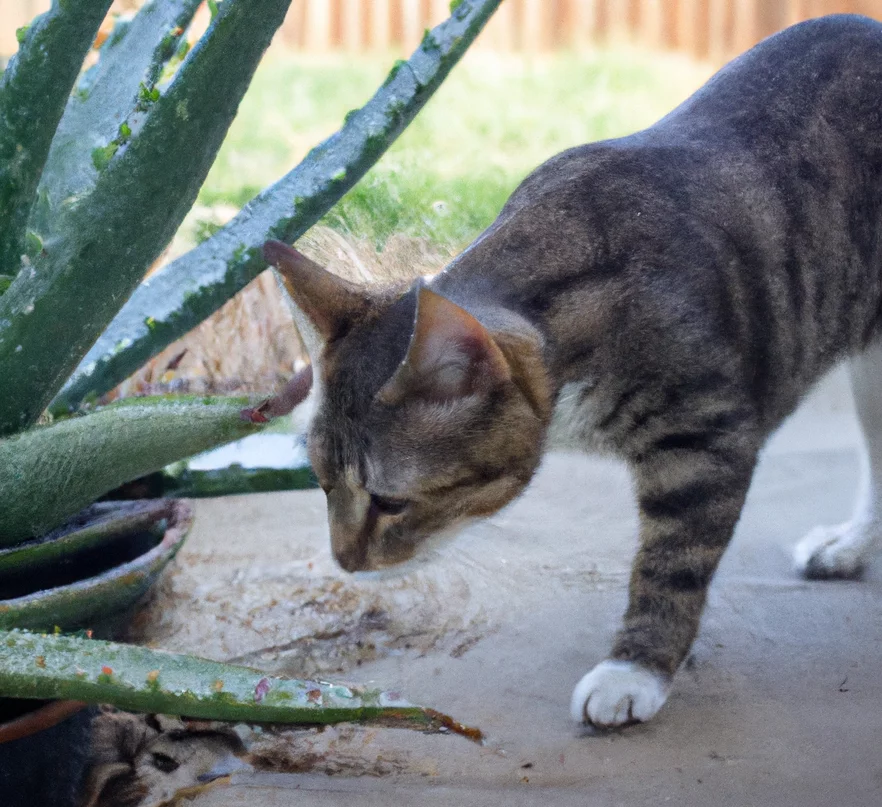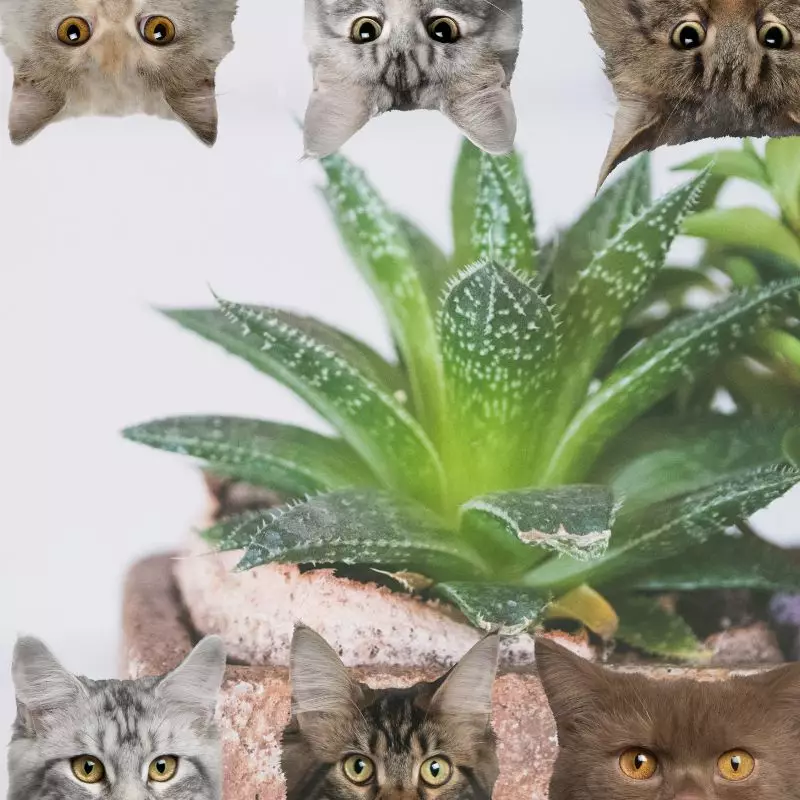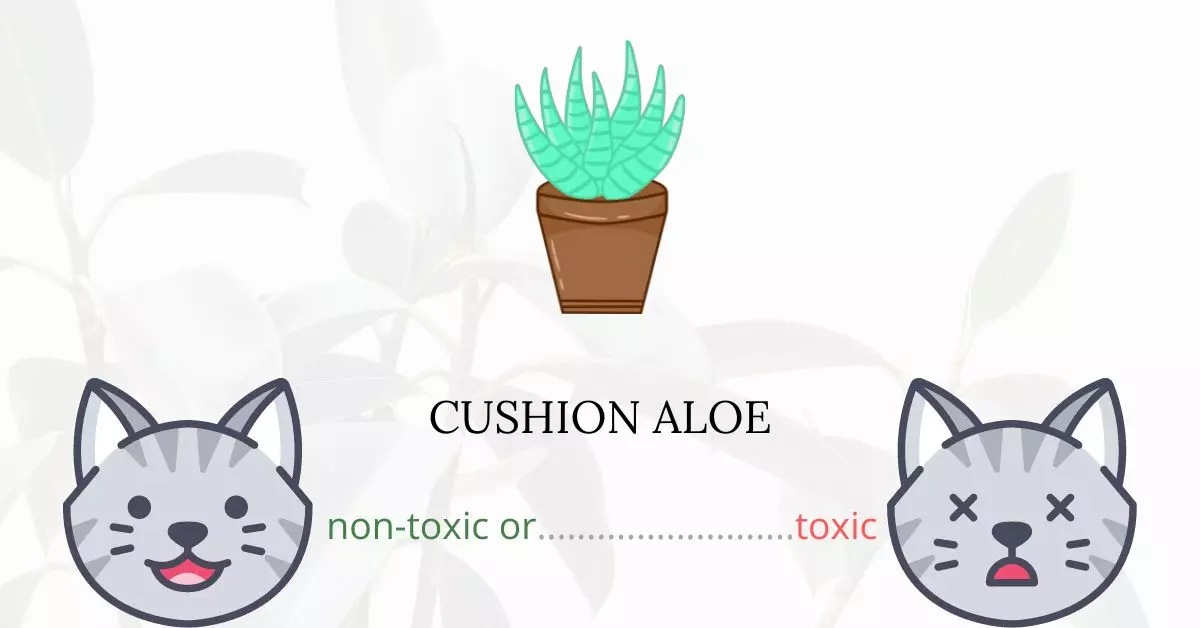Cushion Aloe, scientifically known as Haworthia retusa, is non-toxic to cats. While many Haworthia species are known to be safe for felines, it’s always essential to approach with caution.
This article has been crafted in close collaboration with a team of experienced DVMs (doctors of veterinary medicine). With their valuable insights, we aim to provide readers with accurate and up-to-date information regarding the potential risks or safety of various plants, focusing on Cushion Aloe in this context. Moreover, our claims are substantiated by extensive research from high-authority websites, including ASPCA and PetMD.
Thus, pet owners can be assured of the credibility of the information presented here.
Can Cats Eat Cushion Aloe?

Because it appears to be squishy, your cats might be drawn to it. But don’t worry, because it’s one of the pet-friendly succulents. However, just because a plant isn’t hazardous doesn’t mean you should let your cat consume as much of it as they want. Cats are carnivores, and their digestive systems aren’t designed to handle large amounts of plant matter. Plants are difficult for them to digest, and they require crucial nutrients that only meat can give.
What is Cushion Aloe?

Cushion aloe or also known as Haworthia is a large genus of tiny, perennial, succulent plants endemic to South Africa in the Asphodelaceae family. Haworthia was previously known as Haworthiopsis, and species were shifted from one genus to the other throughout time based on the characteristics of its leaves. Haworthia leaves have translucent epidermal windows on the summits of their leaves in general. They also call this plant as “Star Cactus” because it forms star-shaped rosettes with its fleshy leaves. It is native to a limited area around Riversdale in South Africa’s Western Cape province.
Haworthia plants grow in small to large groups and have erect or creeping stems from a thick woody rootstock. These plants thrive in severe environments and are frequently found buried in sand in the wild. They are simple to grow for gardeners who prefer a well-draining soil combination. While they can tolerate low light, they prefer full sun or bright direct light, which provides the most vibrant hues in the leaves. The star cactus is not cold tolerant and will not survive a freeze, hence it is commonly planted in a greenhouse.
Keeping Cats Away From Cushion Aloe

Every pet owner should exercise caution when it comes to keeping a healthy relationship between their plants and their cats at home.
You may use a cage to keep all of your succulents together. Additionally, you can find these on shelves or on windowsills. You may even hang them from the ceiling to give a more dramatic effect. When placing them, make sure they’re at a reachable height so you can easily water them. Cushion aloe requires less regular watering, thus this will not be an issue.
To prevent your cat from destroying your precious plants, provide alternate greens. Make sure you have plenty of roughages and other green options for it to play with rather than your succulent.
Plants to Avoid For Your Cats
If you are a cat owner and unsure if the plants growing in your yard are harmful to your cats, check out this list of toxic plants for cats. You can also check our list of non-toxic plants for cats.





